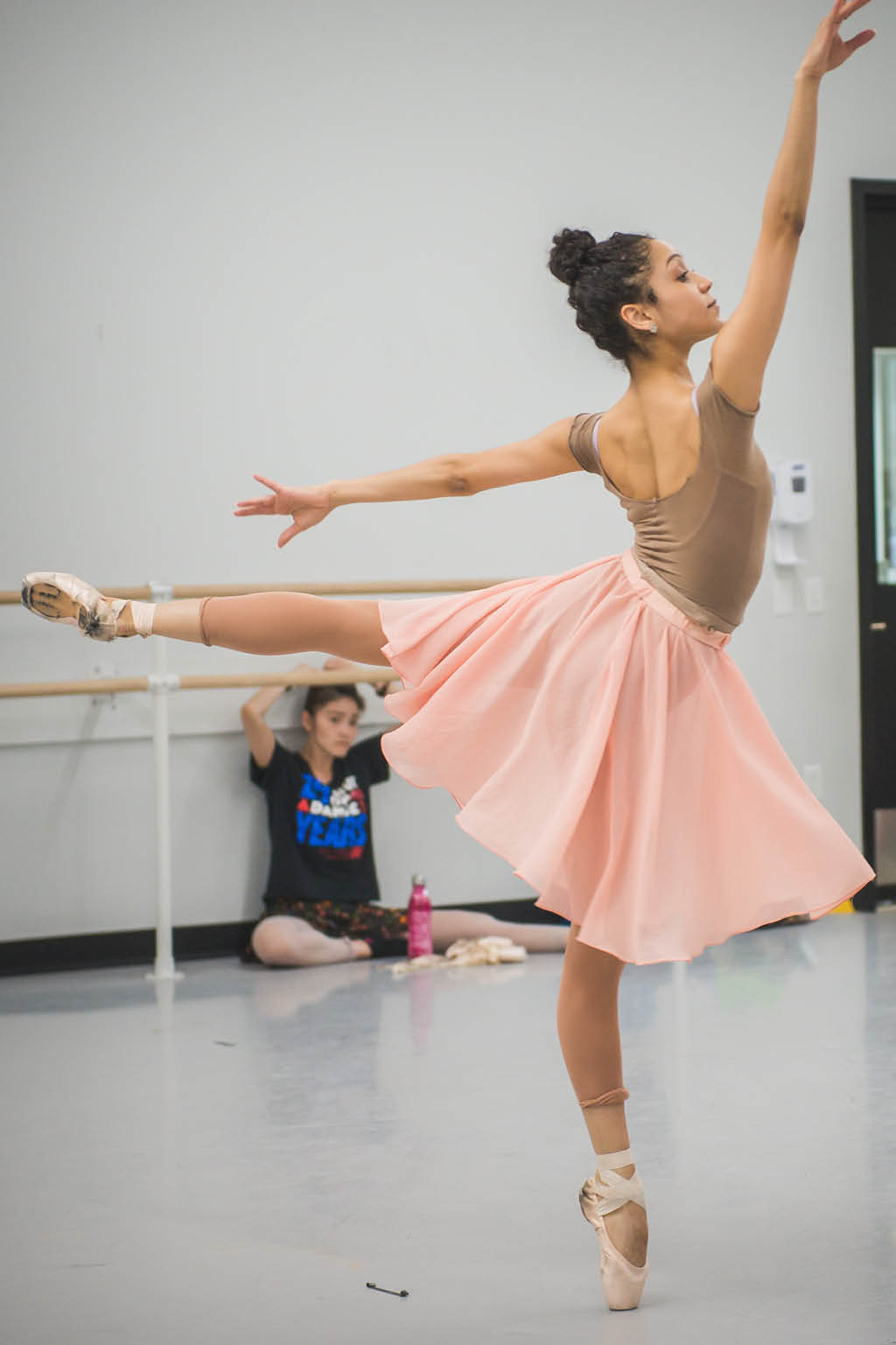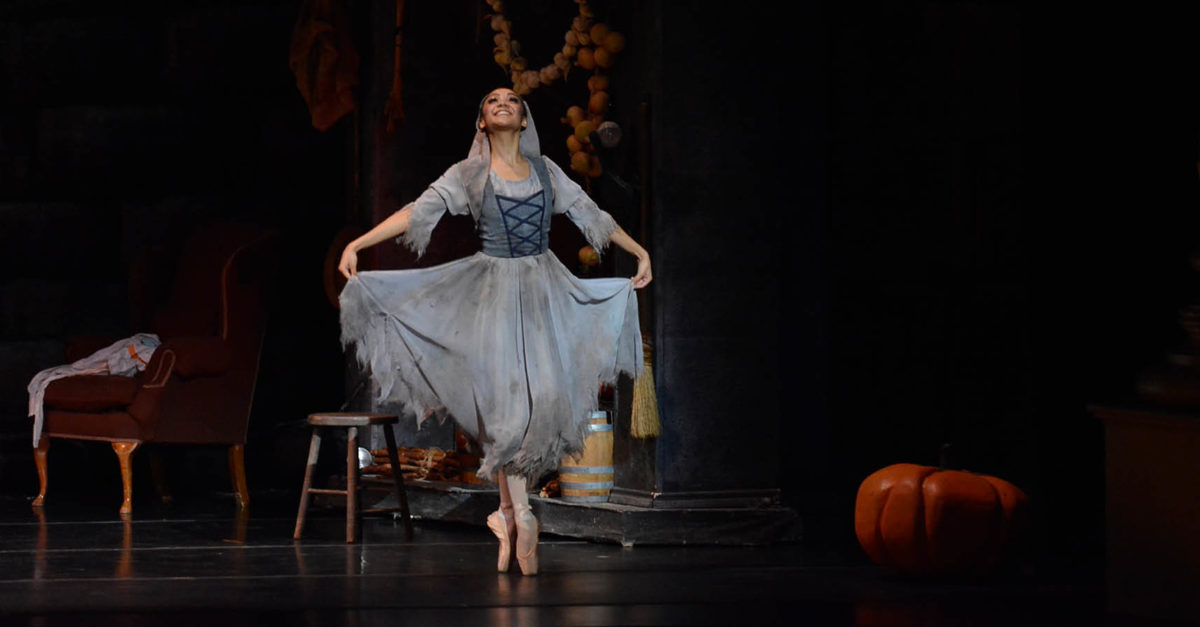Dancing with Destiny
In a world like ballet—full of astronomical expectations, competitive edge, and demanding schedules—finding your place in the midst of it can be tough. For many, the days of twirling in a tutu as a child rarely translate to professional success on a company stage. But for Nayara Lopes, it did.
As she prepares to dance in Pennsylvania Ballet’s performance of Romeo and Juliet, Lopes opens up about her life as a ballerina: her appreciation for the corps de ballet, what keeps her balanced, and the Nutcracker performance that made her realize her dream.
You began dancing at such a young age. When did you know this was something you wanted to pursue professionally?
Growing up in Brazil, I didn’t want to be a dancer, simply because I didn’t know much about it. I started running instead, but when I turned six, I wanted to copy my sister, who was dancing at the time. I began taking classes and enjoyed it so much that I told my parents I wanted to start taking it more seriously. This led to me being in over thirty competitions, where I would consistently win first, second, or third place. From there on out, I loved dancing, and I knew I had to move to America, where I could really make this a career. I then won second place in the Youth American Grand Prix competition in Brazil, which earned me a scholarship to the Jacqueline Kennedy Onassis School at American Ballet Theatre in New York City.
How did your training in Brazil compare to your training in New York? Was the transition difficult, especially on top of already having to move to a different country?
Training at the Jacqueline Kennedy Onassis School was definitely different—it was more detailed, and it forced me to focus more on technique. It was ultimately good, but it required more competitive edge, making it harder than my training in Brazil. I kept thinking, “They’re too talented. I’ll never make it in New York.” But I had moved to the city with only $200, and I knew I had to stick it out. Thankfully, I had the help of a couple in Connecticut the first three months I was in the country. Later, my good friend in the city, who ended up being like a brother and a father to me, helped me move and helped me financially, which made the transition a lot easier.
Prior to joining Pennsylvania Ballet, you danced in Orlando, Canada, and Harlem. How did these different experiences shape you as a dancer, especially working with such a dynamic group of choreographers?
After graduating from ABT, I joined Orlando Ballet II and danced there for a year. I then competed in YAGP again and was chosen for the Mary Day Special Award by Kevin McKenzie (ABT’s artistic director). From there, I received an offer to join the National Ballet of Canada in Toronto as an apprentice. Throughout my time there, I had many good and bad experiences, and it ended up not being the right fit for me. I then joined Dance Theater of Harlem, where I toured a lot (up to three months at a time). I loved seeing new places and working with many choreographers, but after three years I wanted to move on to a more classical company. By chance, I vacationed for a weekend to Philadelphia with my boyfriend and took a class with Pennsylvania Ballet. The artistic director, Angel Corella, asked us to be in the company and offered us both contracts. I am very grateful for Angel giving me the opportunity to become the dancer I know I can be. I have had many ups and downs during my journey … at times, I wanted to quit. But through it all, I’ve held on to the fire and passion inside of me.
What are some common misconceptions people have about the corps de ballet (ensemble)?
There are many, but the biggest one is that it’s the easiest role in a ballet. What many don’t realize is that you can go from being a corps member to being a soloist to being back in the corps. When I was in The Sleeping Beauty, I performed in the corps for two nights, and the third night I was Aurora. It doesn’t necessarily mean you’re at a lesser level than those dancing the main roles. The corps de ballet is still very much mentally and physically exhausting. You can be an excellent dancer—one of the best—and still never make it.
How do you stay positive in such a competitive industry? Does being a professional ballet dancer affect your idea of body image?
You’re always going to want to put yourself down, but you have to be realistic and know your worth. It’s sad to me that some people get caught up in being overly critical of themselves because everyone is unique. I think it has gotten a lot better, though. Some companies don’t allow you to dance if you have health problems, but it’s hard because there’s still that notion that a “thin dancer” looks good on stage. However, there are professionals at every company who help you with that aspect of the job. There are steps continually being made to improve this part of the industry.
What’s a typical day for you? How does it differ as you get closer to a performance?
When I’m performing, I don’t wake up as early because class isn’t until later. I perform, go home, and sleep. In such a demanding environment, I do my best to not push myself too hard. You can’t do too much during the weeks of performances—how you work out and eat is a lot different from a typical day. Whereas in my daily life as a dancer, I stretch more often, dance for three hours, and then eat a small lunch. I dance for three to four more hours after lunch, and then I go to the gym for an hour or two and have a big dinner afterward.
Ballet dancers are no strangers to injury— how do you prevent injury in such a rigorous environment?
I prevent injuries by working out consistently, even during the off-season. When I stop working out, that’s when the stress reaction in my foot can flare up, so I try to do Pilates and yoga whenever I can.
What’s been your favorite ballet to perform in?
Performing [as] Aurora in The Sleeping Beauty was definitely a dream come true. However, George Balanchine’s The Nutcracker was the first ballet I ever saw, and, as soon as I heard the music, I just had this feeling in my heart that I needed to dance the Sugarplum Fairy role. Fulfilling that dream was indescribable, and it will always be very special to me. I also want to continue getting out of my comfort zone, which I had to do for Sir Kenneth MacMillan’s Romeo and Juliet. This ballet is about strength but also grace. I have to be able to show emotion and drama and bring out the artistry—it’s not as technical of a ballet.
What is your first memory of The Nutcracker?
My first memory of The Nutcracker is seeing it in Brazil at the Teatro Guaíra company, which I graduated from before coming to the States. When I was a student, I had the opportunity to dance the role of Clara, and I’ll never forget how inspired I was by all of the talent.
The Nutcracker is such a staple. How do you bring something new to a role that’s been performed so many times?
A choreographer once said to me, “Respect how you feel that day,” and I thought it was so genius. The first time I performed the role of the Sugarplum Fairy, I was very energetic because I was so excited to be dancing that role. After I had performed it a couple of times, I was softer in my movements. If I listen to my body and I’m in tune with how I’m feeling, that’s what brings a different energy to the performance.
What’s the preparation like for The Nutcracker compared to regular season performances? Is the prep more or less intensive?
The Nutcracker is the first ballet most dancers perform in professionally, so, in a way, our bodies become used to the music. I’ve performed it for two seasons with Pennsylvania Ballet, but it’s still physically demanding. We have more time for regular season ballets, but, for this, it’s a much shorter time frame. In 2017, for example, I performed despite having just one day to prepare due to a stress reaction in my foot. I knew I could do it; it was just about getting into that mind-set.
How do you prepare for a performance? Do you have any preshow rituals?
People may think I’m crazy, but I eat two slices of pizza before every performance. It gives me energy, and it’s just something I have to do! As far as warming up, I make sure to get plenty of rest and get to the theater before everyone else. I like to do my own barre warm-up, so I can stretch out my toes and my leg muscles.
Who are your role models in the industry? How have they shaped you as a dancer?
I like looking up to people in the industry who not only have strong technique but also dance from the heart. There are so many people in the company who are so strong and may have come from hard backgrounds but never stop giving it their all. It creates a healthy competition, because everyone wants it and everyone works really hard. Being surrounded by that breadth of knowledge every day makes me work that much harder.
What are your interests outside of ballet? How do they help you maintain a life of balance?
Besides working out, I enjoy painting and reading. They keep me sane! Traveling is nice, too, because it keeps me grounded and helps me understand there’s so much more out there besides dance. The dance world can very much be its own bubble, which isn’t always a positive thing, so seeing new places helps with that.
What do you love most about ballet?
I love that ballet can bring people to a whole other level of emotion. It helps people forget about whatever they’re going through for two hours through the story we tell as dancers. It’s a live art form, so the connection between the performers and the audience is very special.
What advice would you give aspiring ballerinas?
Always remember why you chose this—it’s your passion! Being in the studio every day comes with its fair share of criticism alongside the physical work, so it’s important to stand your ground. As I mature as a dancer, I understand more and more the importance of work ethic and technique in order to express my artistry onstage. Perfection in ballet doesn’t exist, but that’s the beauty of it. I hope to pass on what I’ve learned to younger dancers, too.
For more information, visit paballet.org.









